“Good friends, good books and a sleepy conscience: this is the ideal life.”

-Mark Twain, American writer
Wales
Hay-on-Wye
Hay-on-Wye (Welsh: Y Gelli Gandryll), is a small market town (pop: 1,900) that sits mostly in Wales (its eastern parts lie in England), and is often abbreviated to just “Hay.” The Y Gelli part translates: “the town of books.” It’s both the National Book Town of Wales and the site of the annual 10-day Hay Festival held each May/June.
Hay is THE destination for bibliophiles in the United Kingdom, with its 20 or so bookshops selling specialist and second-hand books. The Hay Festival attracts worldwide, top notch talent: R&B singer Corinne Baily Rae, actress Minnie Driver, and Benedict Cumberbatch were among the exciting guest appearances announced for this year’s festival; as were The Ukulele Orchestra of Great Britain! The literary event draws over 250,00 annual attendees. The festival was described by Bill Clinton in 2001 as “The Woodstock of the mind”.
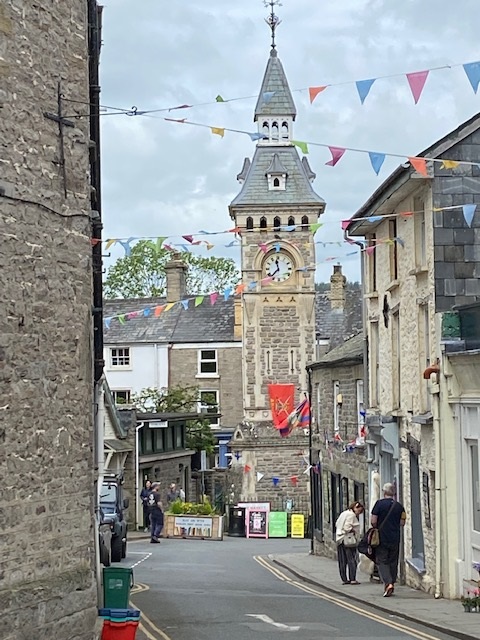
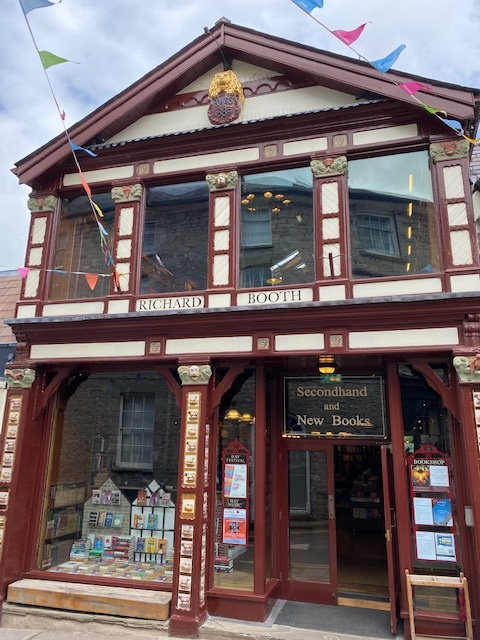
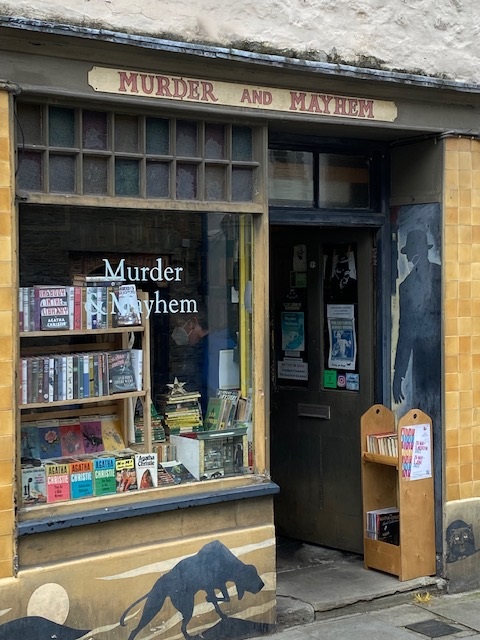
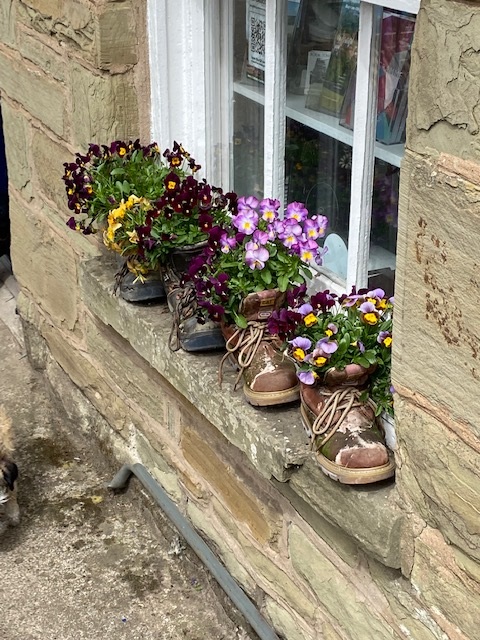
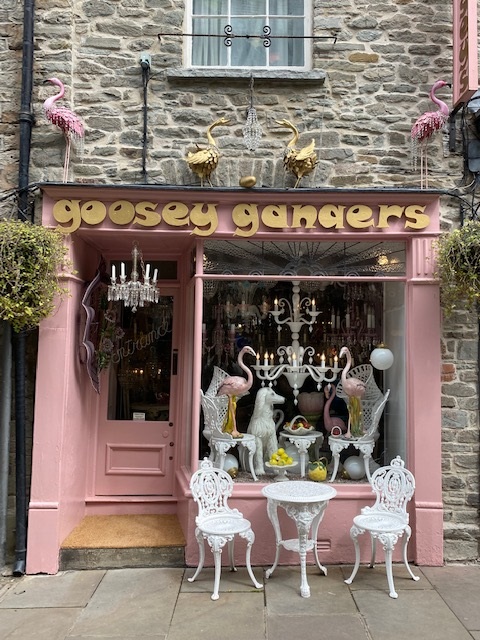
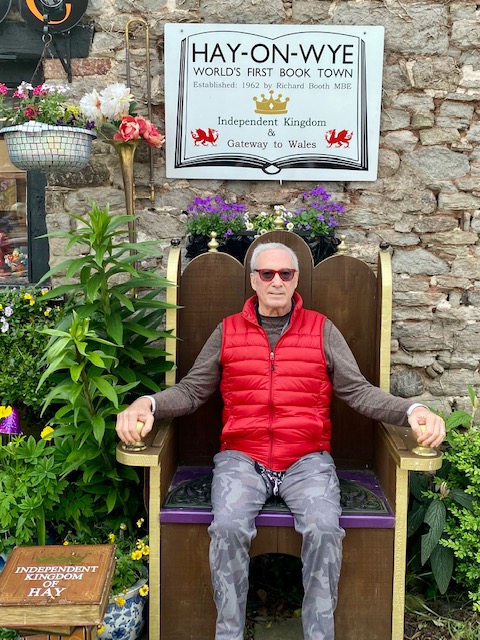
Though we were visiting the week prior to the big festival (we’d be in Edinburgh 350 miles away), and thankfully arrived early, because the town’s small center was quickly filling up fast (imagine the crowds during the actual event?!).
We enjoyed browsing in/out of shops. David was able to find another of Mary Oliver’s exquisite poetry books to add to his collection, at the Poets Book Shop. For me, I stopped by a local bakery and had an excellent Welsh Pasty (a very large empanada) to feed my soul.
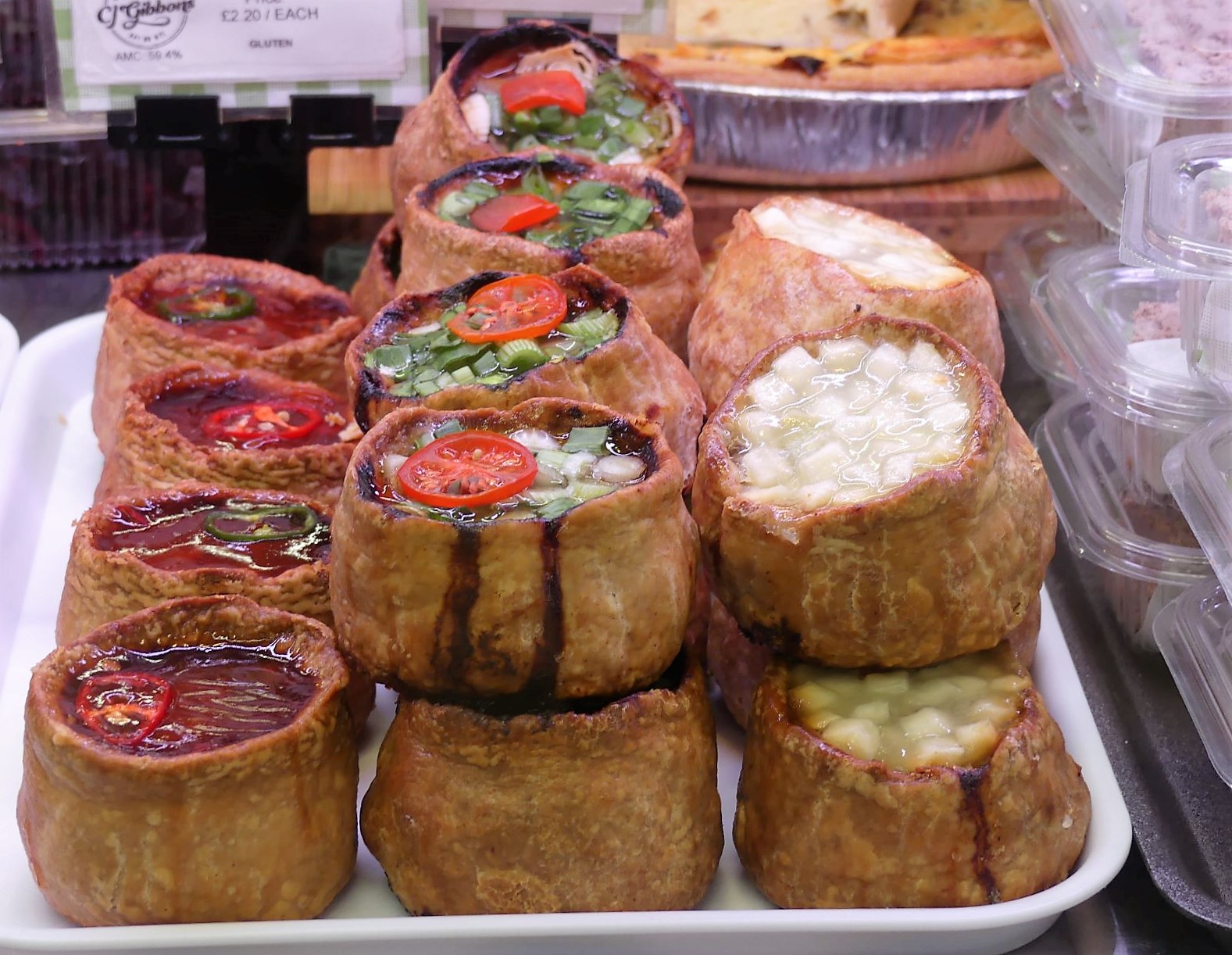
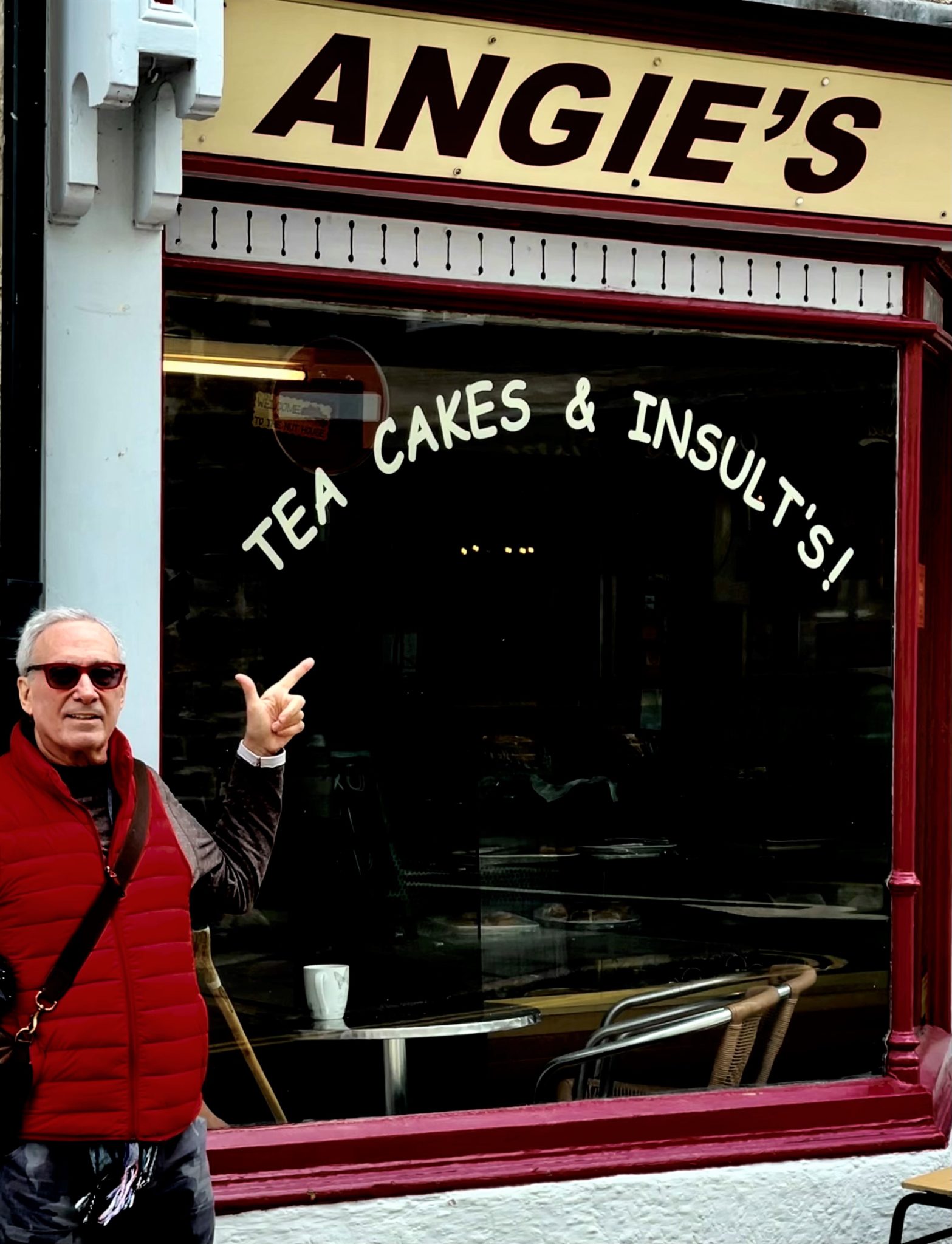

Hay-on-Wye was an accidental discovery. I’d happened upon a TV blurb about it and made a mental note to add it to our itinerary, though it was a bit off-course in our travels. I’m so glad we did … a refreshing stop that celebrates the book, and gave us a momentary break from castles. Hmmm … didn’t pick up any books on that subject matter.
From books to an architectural marvel and achievement …
Pontcysyllte Aqueduct
The Pontcysyllte Aqueduct, a World Heritage Site, was designed by civil engineers, Thomas Telford and William Jessop in 1805, and is still considered one of outstanding achievement in engineering during the Georgian or Regency Era. Pontcysyllte literally translates to “the bridge that connects the river.” It’s an amazing sight to behold.

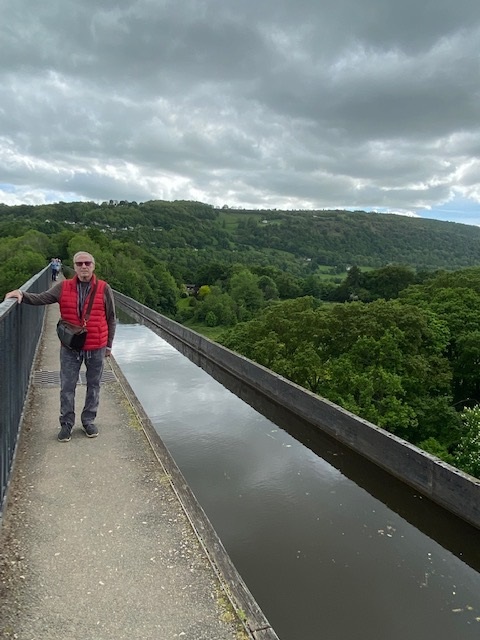
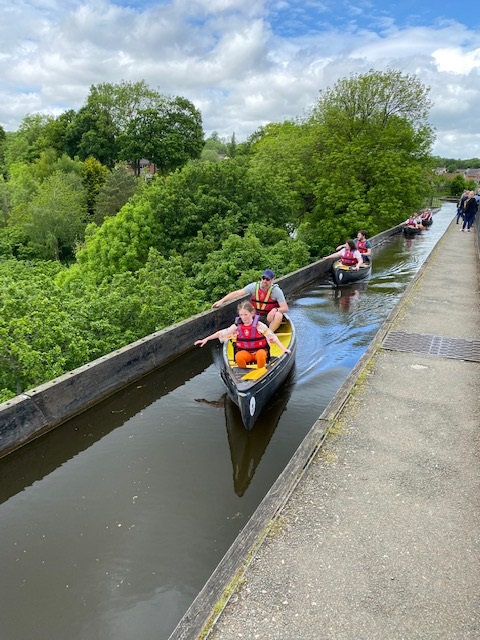

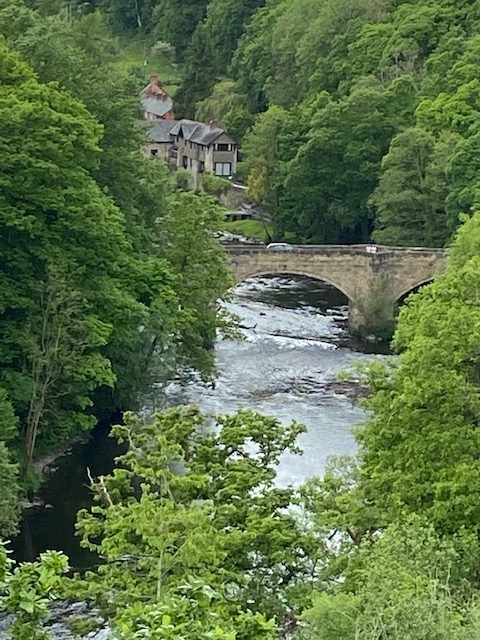

The 18-arched stone and cast-iron structure is for use by narrowboats and it took ten years to design and build. It’s 12 ft. wide, and is the longest aqueduct in Great Britain and the highest canal aqueduct (125 feet) in the world.
A narrow footpath runs alongside the watercourse on one side. And here I go again, pushing David out of his comfort zone; as he clung on to me as we slowly crossed the River Dee in the Vale of Llangollen far below. David has a fear of heights, and would only venture half-way, if that, moving very slowly and carefully. He’d step aside and stand rigid and flat against the open slat, metal barrier when other pedestrians would approach and saunter by. But he was the trouper – anything for the perfect photo op!
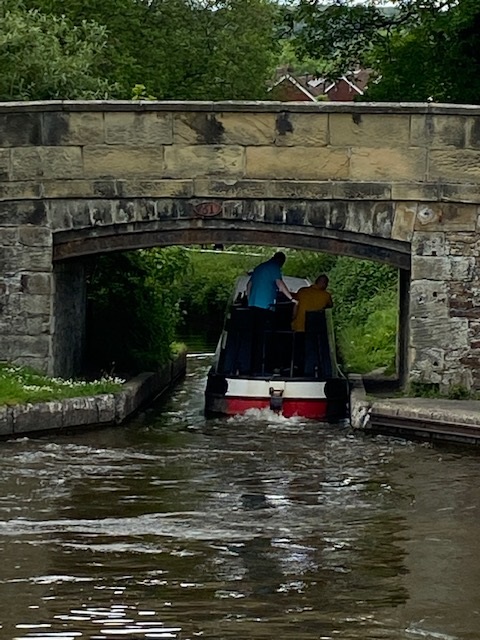
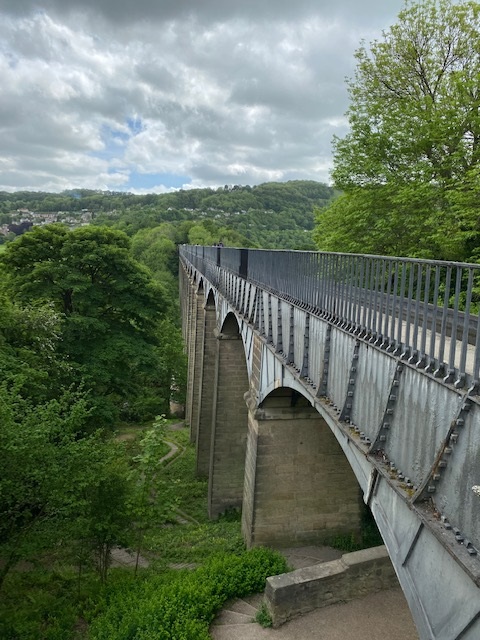
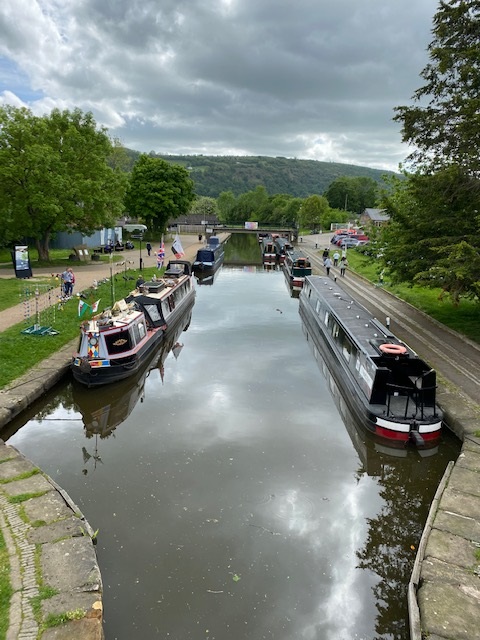
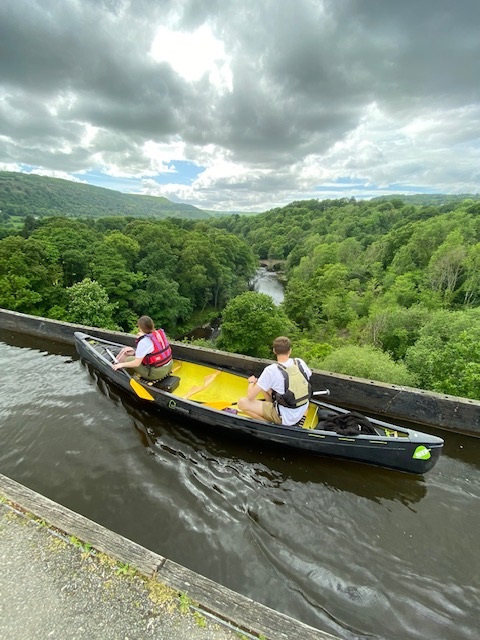
The nearby Pontcysyllte Chapel Tea Room and café was a lovely stop for some tea and a sandwich in the converted 1902 church. Their motto, “Eat and Rest in Good Company” … and off we go back “a’castleing.”
Caernarfon Castle
Caernarfon Castle is often anglicized as Carnarvon Castle, a medieval fortress in northwest Wales, a World Heritage Site. It was a motte-and-bailey castle from the late 11th-century until 1283 when King Edward I of England began to replace it with the current stone structure.
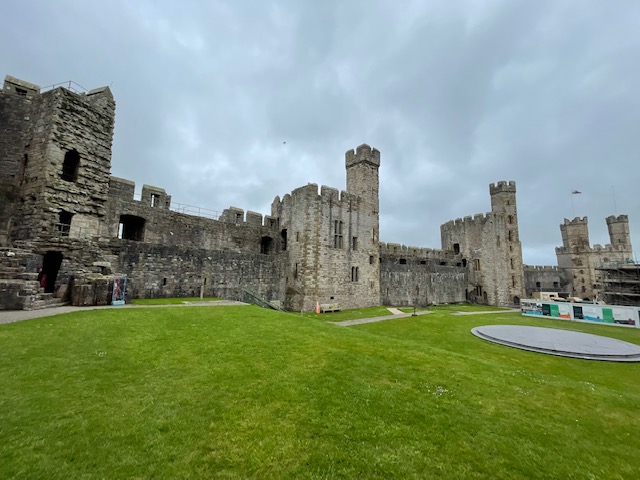


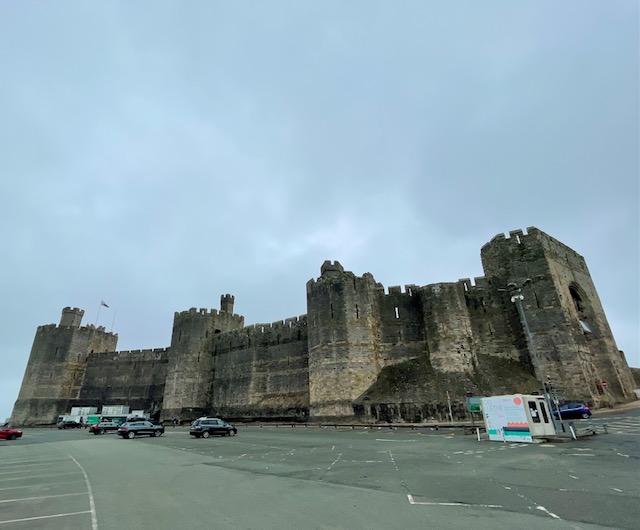
While the castle was under construction, town walls were built around Caernarfon. Although the castle appears mostly complete from the outside, the interior buildings no longer survive and many of the building plans were never finished. The town and castle were sacked in 1294 during the rebellion against the English.
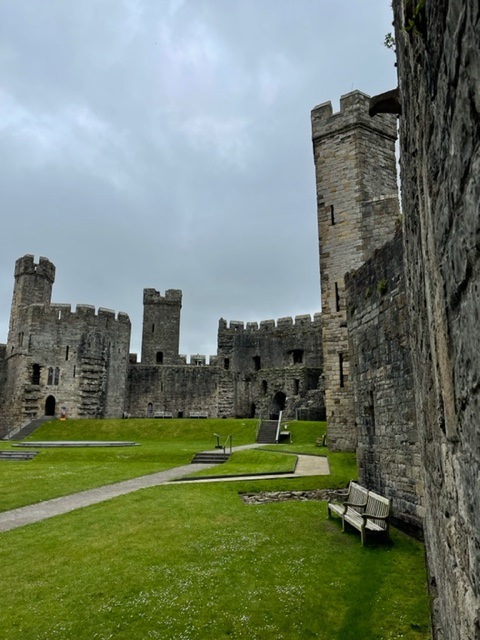
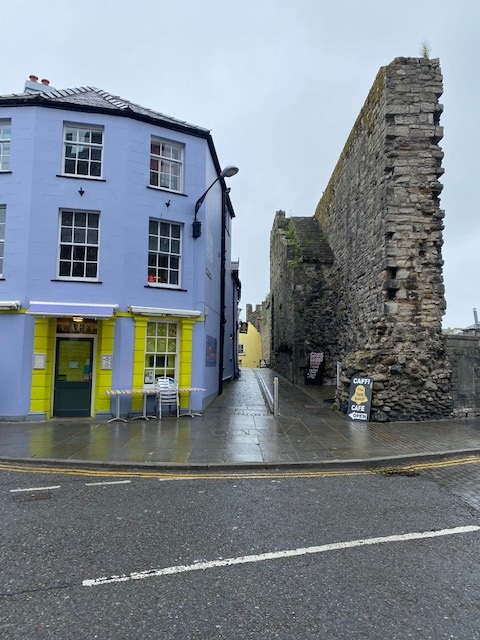

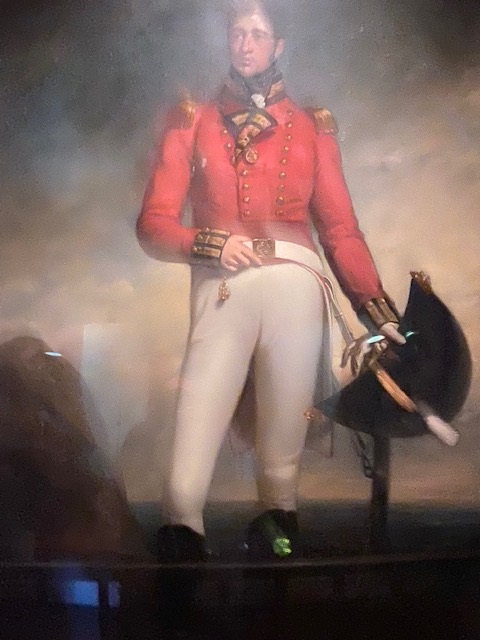
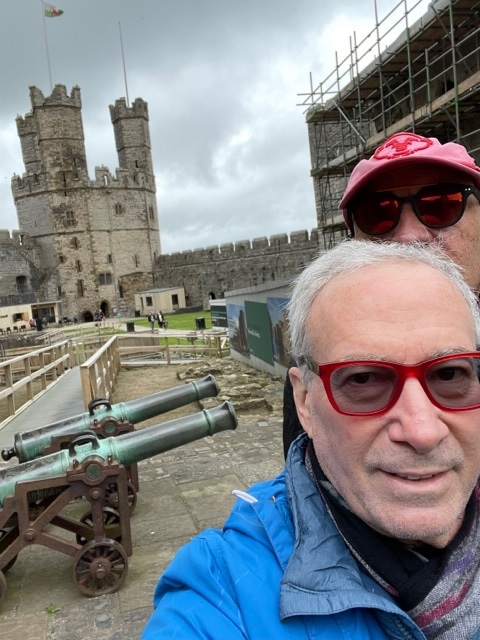
When the Tudor dynasty ascended to the English throne in 1485, tensions between the Welsh and English began to diminish and castles were considered less important. As a result, Caernarfon Castle was allowed to fall into a state of disrepair.
According to tradition, Edward II was born at Caernarfon on 25 April 1284. Edward was crowned Prince of Wales in 1301, with control over Wales and its incomes. Since then, the title has traditionally been held by the eldest son of the monarch. According to a famous legend, the king had promised the Welsh that he would name “a prince born in Wales, who did not speak a word of English” and then produced his infant son to their surprise.
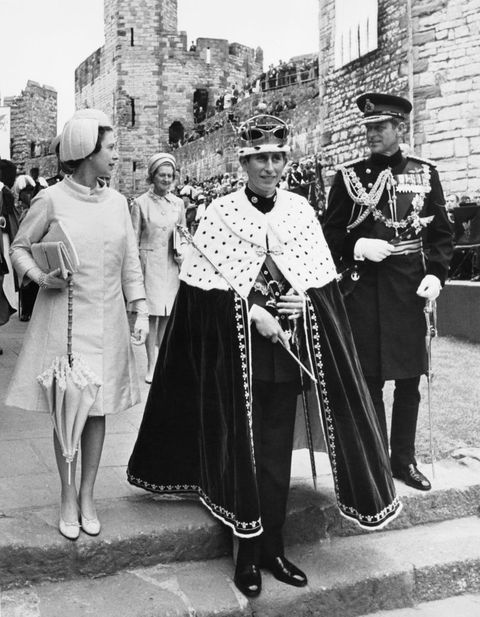

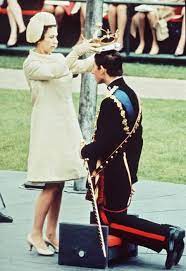
The castle was famously used for the investiture ceremonies of HRH The Prince of Wales in 1911 and again 1 July 1969 (a highly watched televised spectacle).
Snowden Mountain Railway
Boys back on the train … the Snowdon Mountain Railroad, is a tourist railway that travels 4.7 miles to the summit of Snowdon, the highest peak in Wales. However, this day the weather gods were not on our side. We booked our tickets, with a rain warning provided, but decided to stay positive, and “Keep Calm and Carry On” with it. Bad decision.
Heavy rains quickly moved in, along with fog and wind … making visibility nil, zero, zilch. The old train car chugged along, slowly ascending what should have been a scenic mountainside, but instead was just a bleak, blank landscape outside the fogged-up windows.
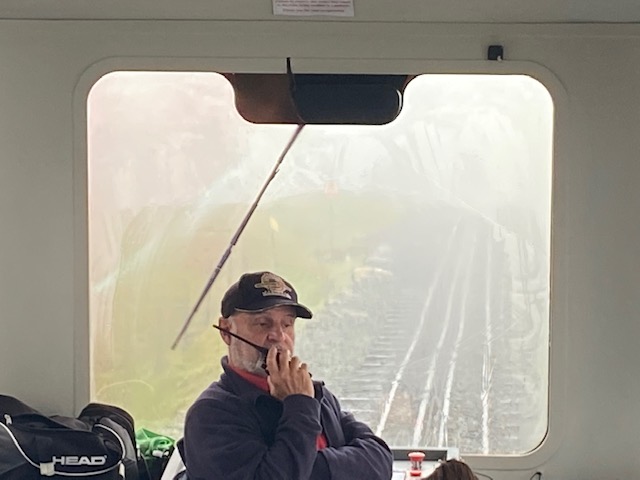
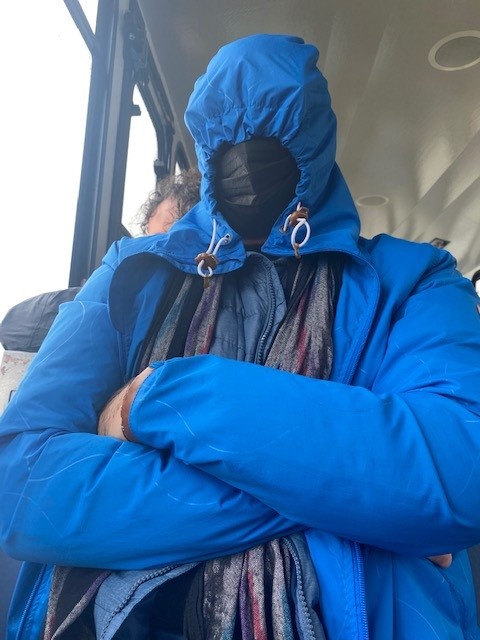
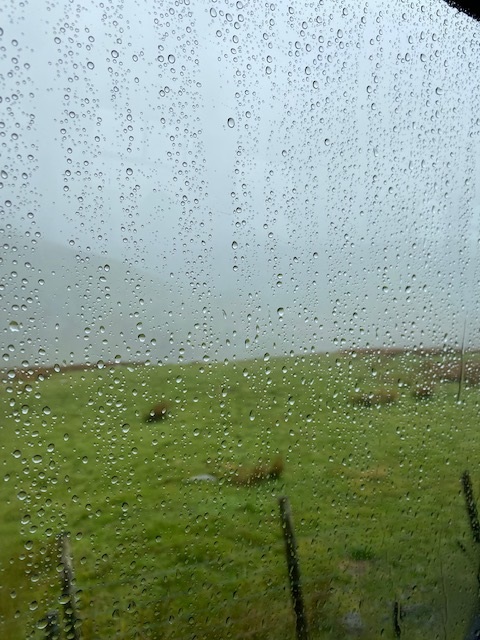
We’re now stuck inside a fairly crowded and small space. It felt like being in a “The Twilight Zone” episode; with a two-hour train ride to hell and back. You see, at the last minute, a group of folks booked passage that delayed our start and ended up sitting in the back. These caboose-ettes made up for the dreary ride by entertaining themselves with very LOUD, nonstop shouting, and nonsensical, gossipy conversations. Feeling confined in such an environment, David tried keeping his composure, but felt overwhelmed. He tried blocking out the noise, unsuccessfully, and here’s the result of that … David, the Ninja Warrior (sans weapons)!
Bodysgallen Hall
Bodysgallen Hall, our hotel for two nights, is just one of three Historic House Hotels of the National Trust. A 17th-century country manor turned into a 5✰✰✰✰✰ hotel, it’s two miles south of the Victorian seaside, resort town of Llandudno, sitting on a peninsula jutting into the Irish Sea.
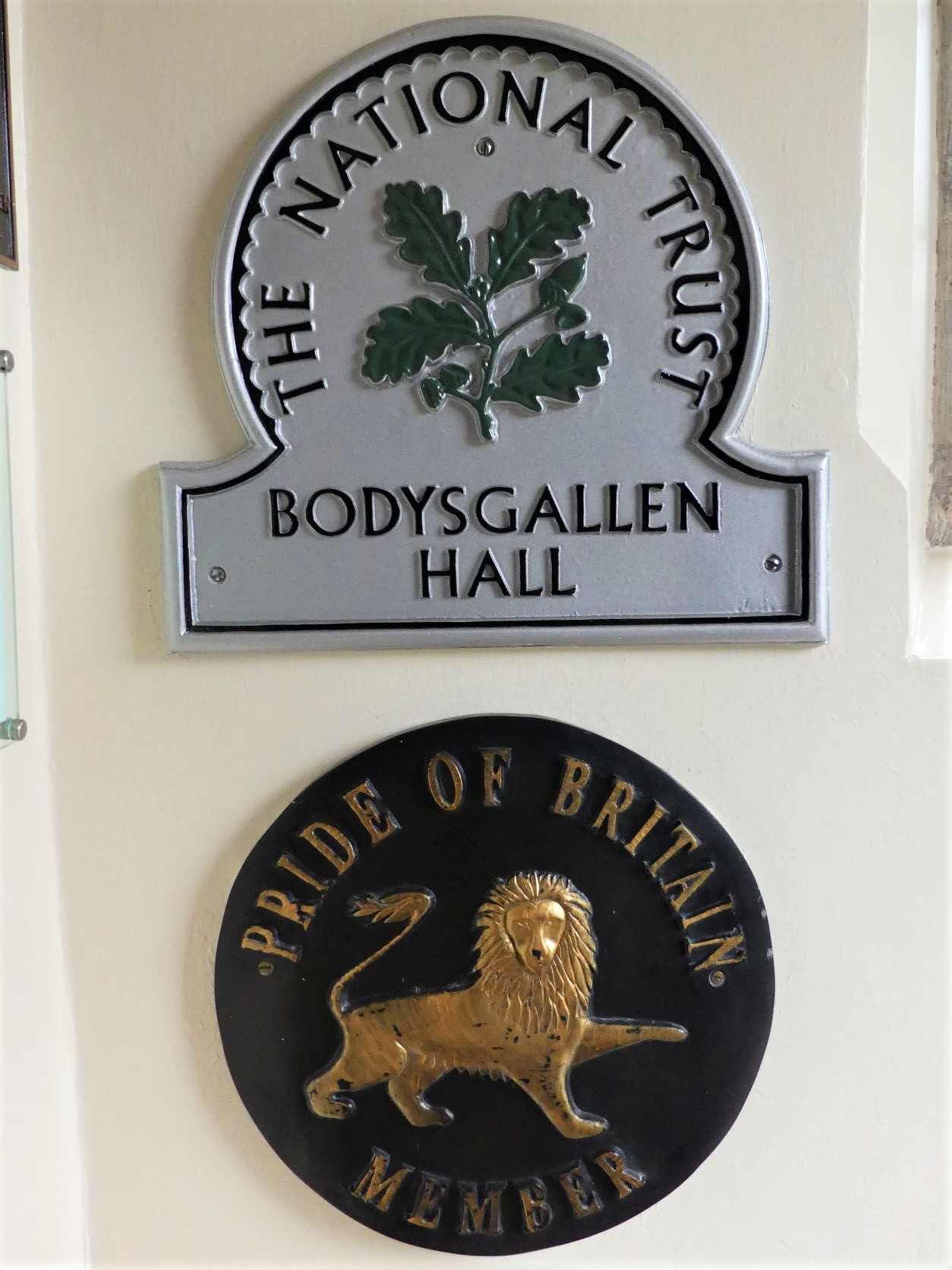
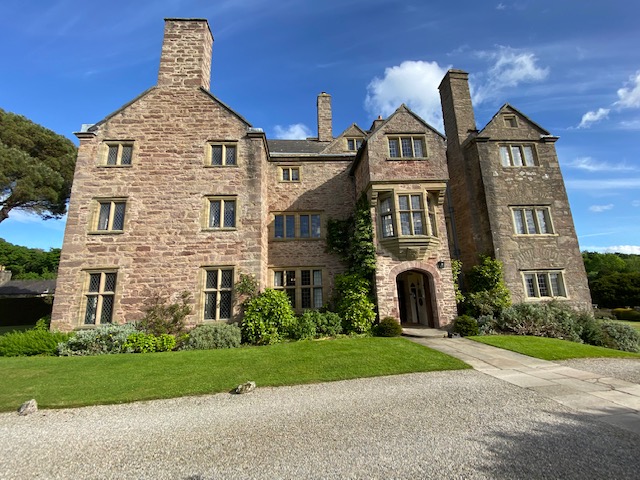
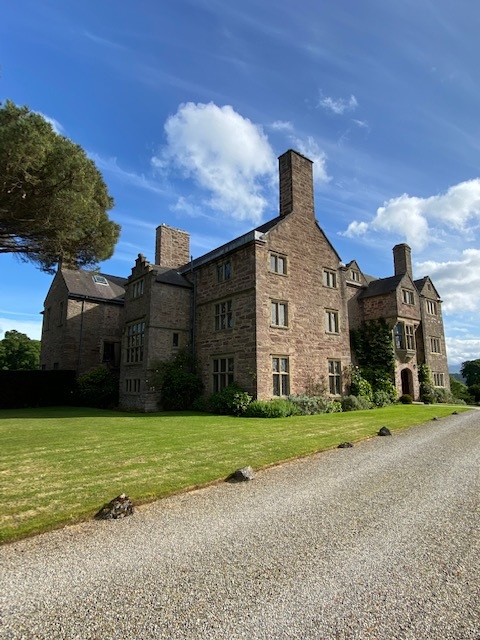
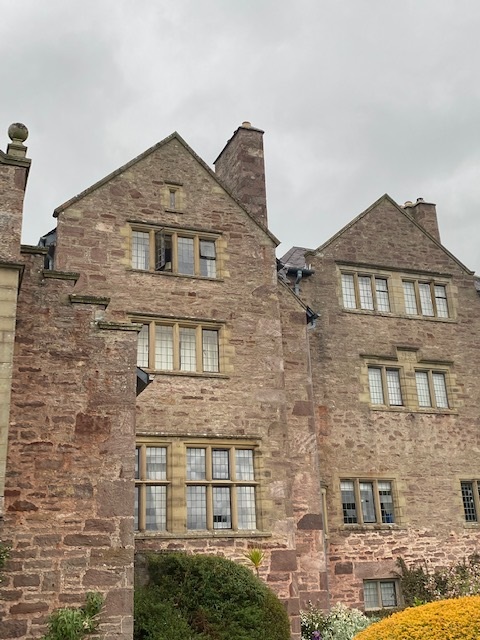
It’s set on over 200 acres of verdant parkland and pastures. The driveway was over a mile long with hundreds of sheep grazing with their new baby lambs. We drove very slowly since the lambs were skittish and were too close for comfort alongside the road.
At this time, I need to talk about sheep. So far, traveling through the rural countryside of Wales, fields of sheep abound everywhere, and being springtime, lots and lots of baby lambs. It’s been stated that Wales is home to more sheep than people! We could definitely confirm that.
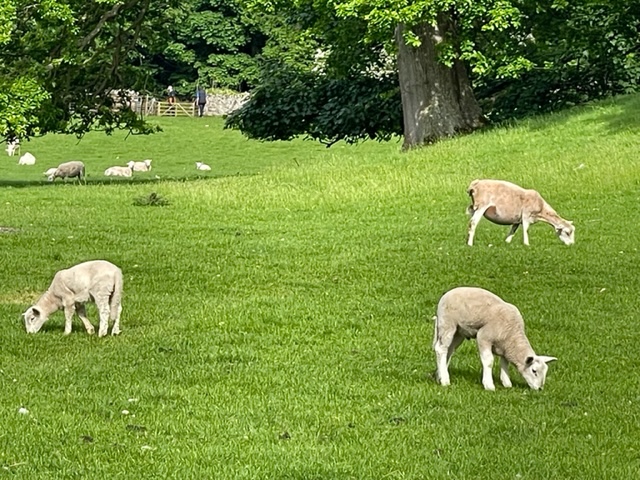


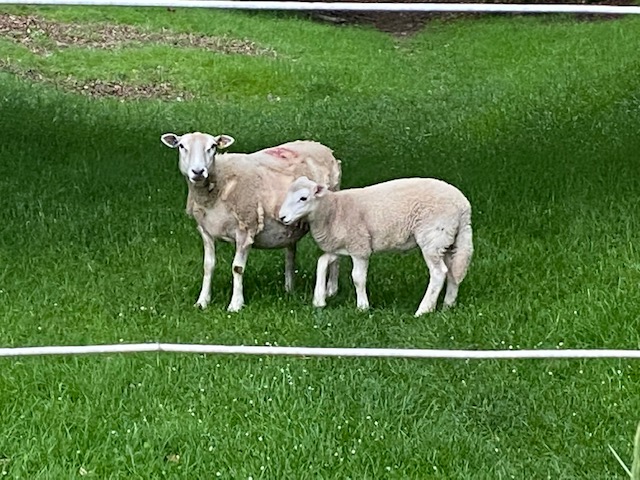
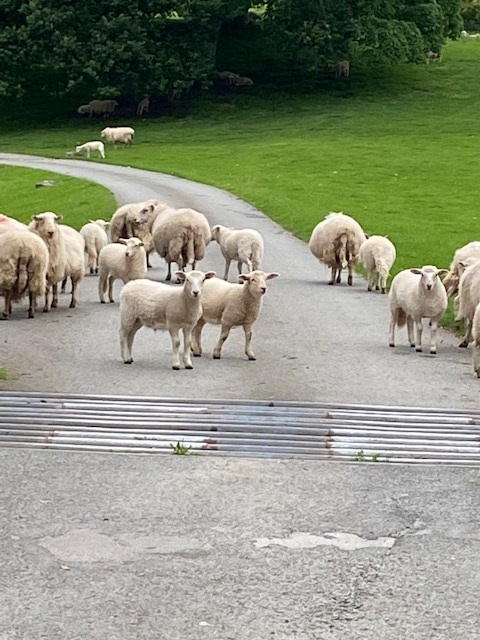
Throughout Bodysgallen Hall, are lovely, refined, antique-filled rooms, many with garden or parkland views, modern amenities, iffy Wi-Fi, but this is a genteel environment, where you don’t need to be connected to the outside world. Our room was in the attic area, so off we climbed a labyrinth of stairs … do you know how much dirty clothes weigh?!
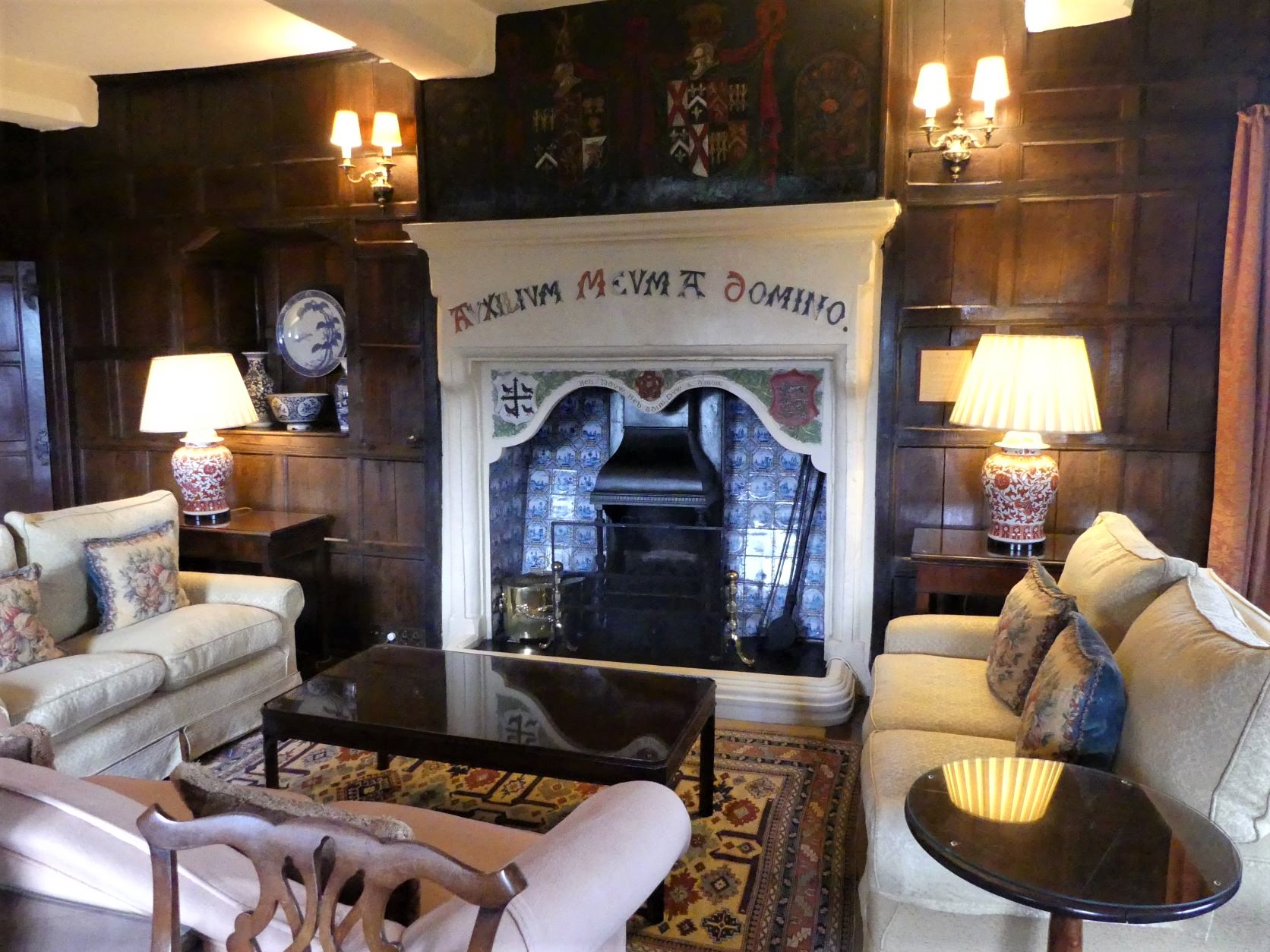
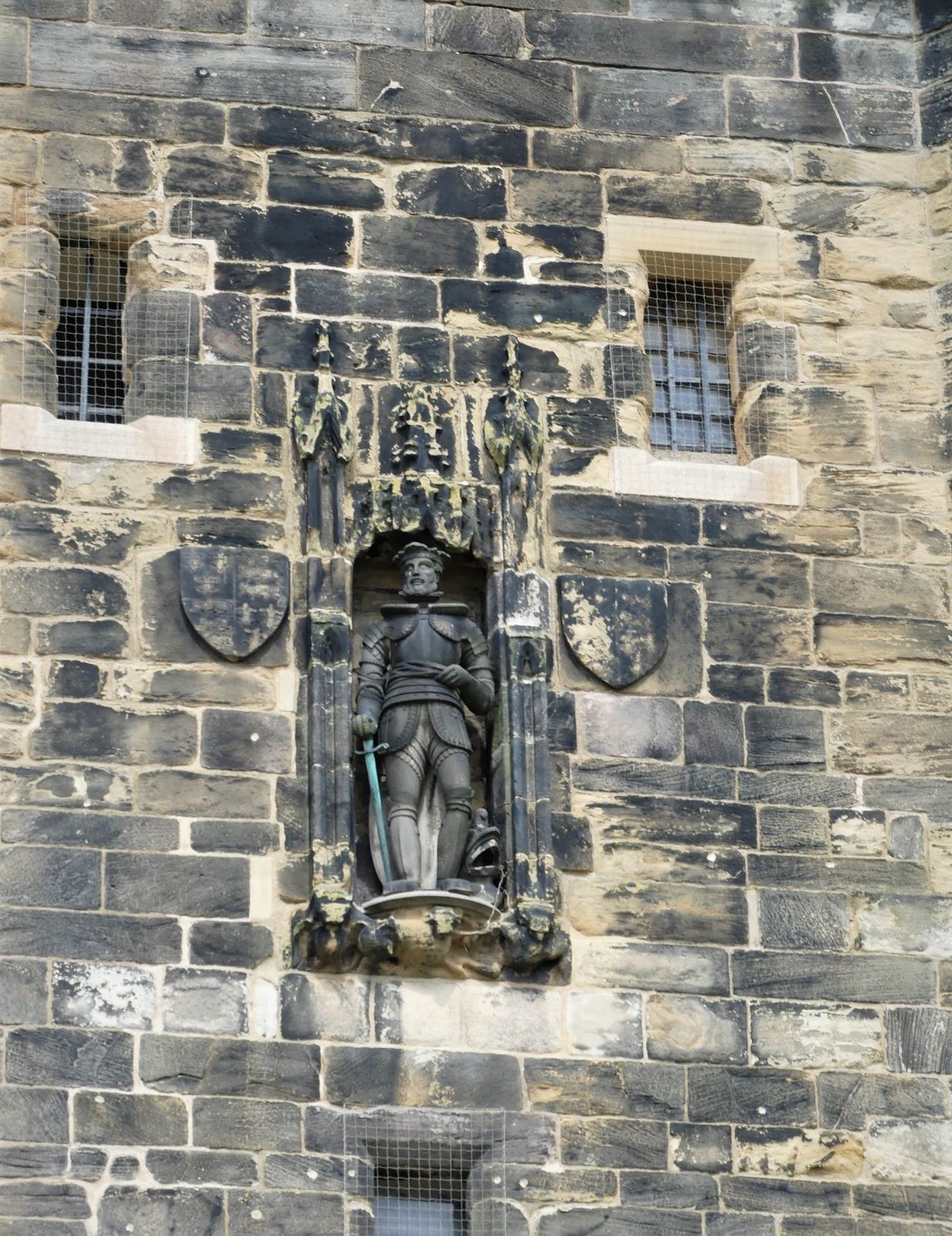
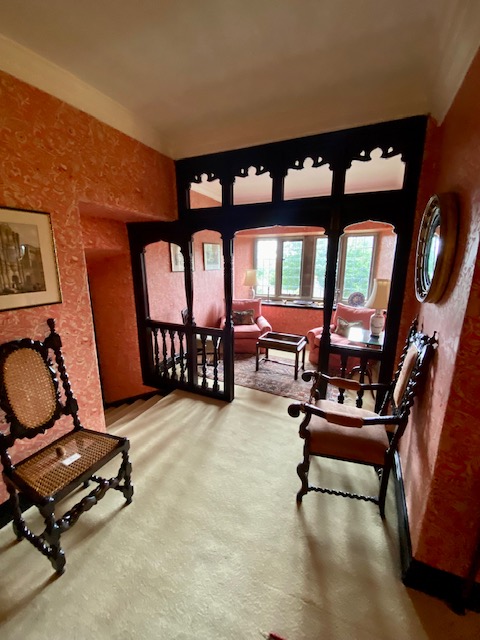
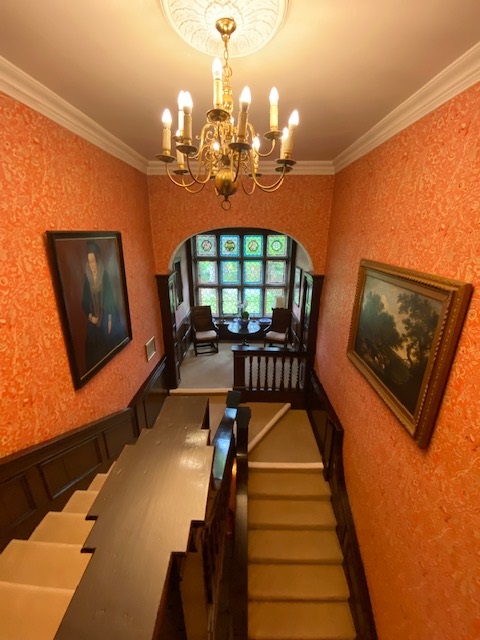
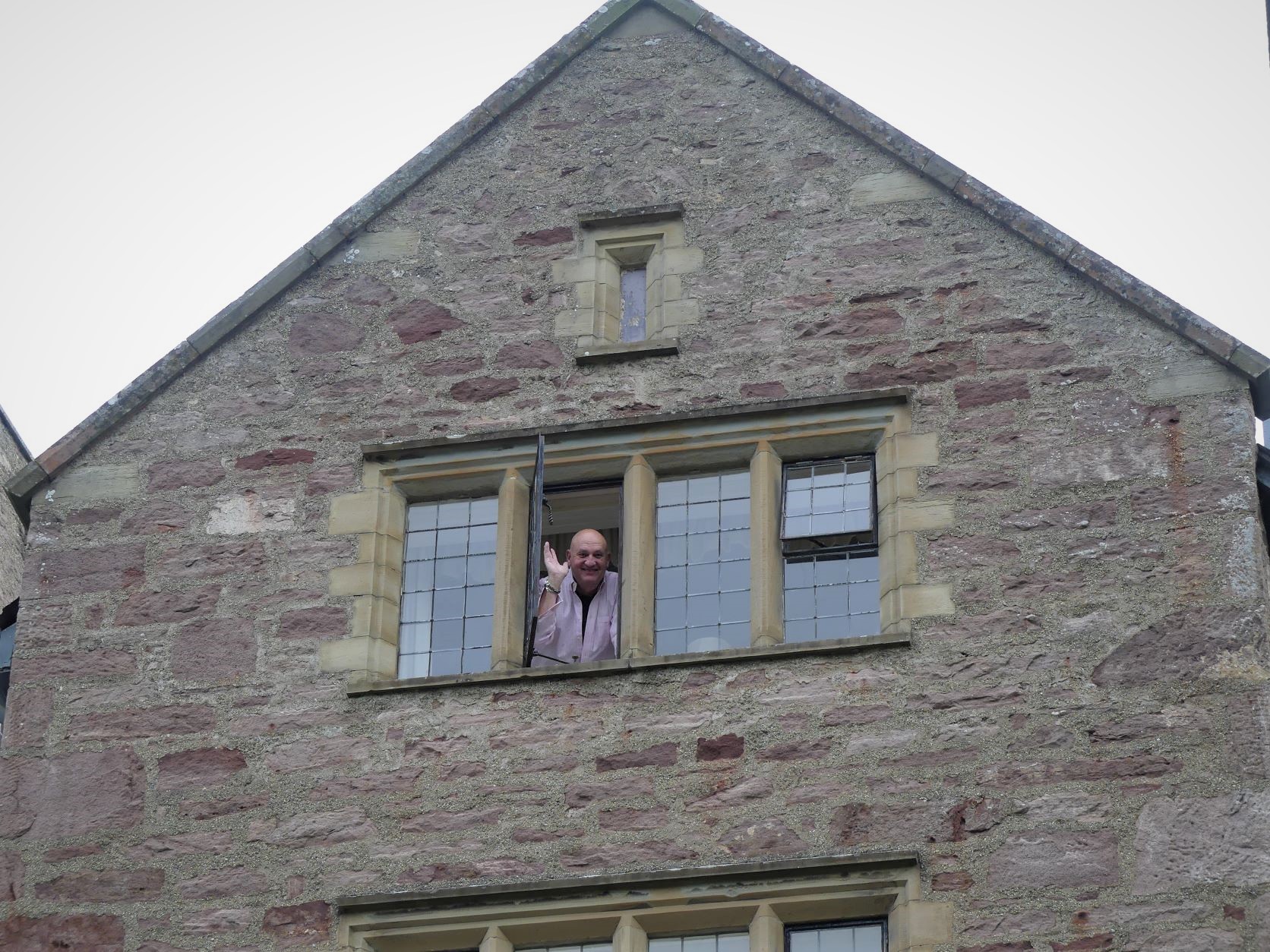
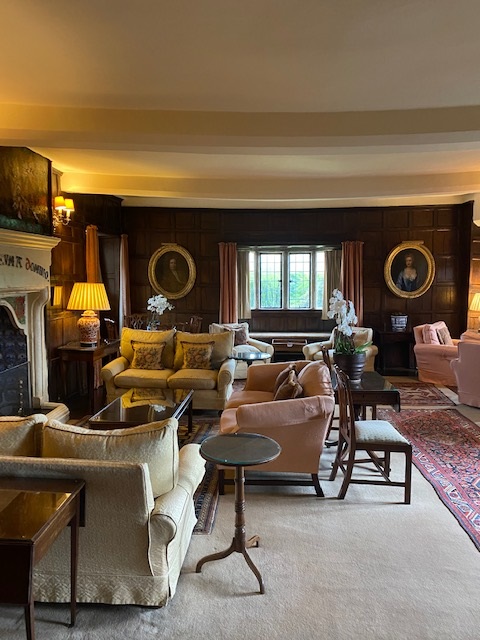
Being so high up, we were treated with spectacular views … our vista included the gardens below, the countryside, Snowdonia National Park, and Conwy Castle two miles off in the distance on the River Conway. Sadly, due to time constraints, we actually missed out on a castle visit; Conwy Castle being on my list.
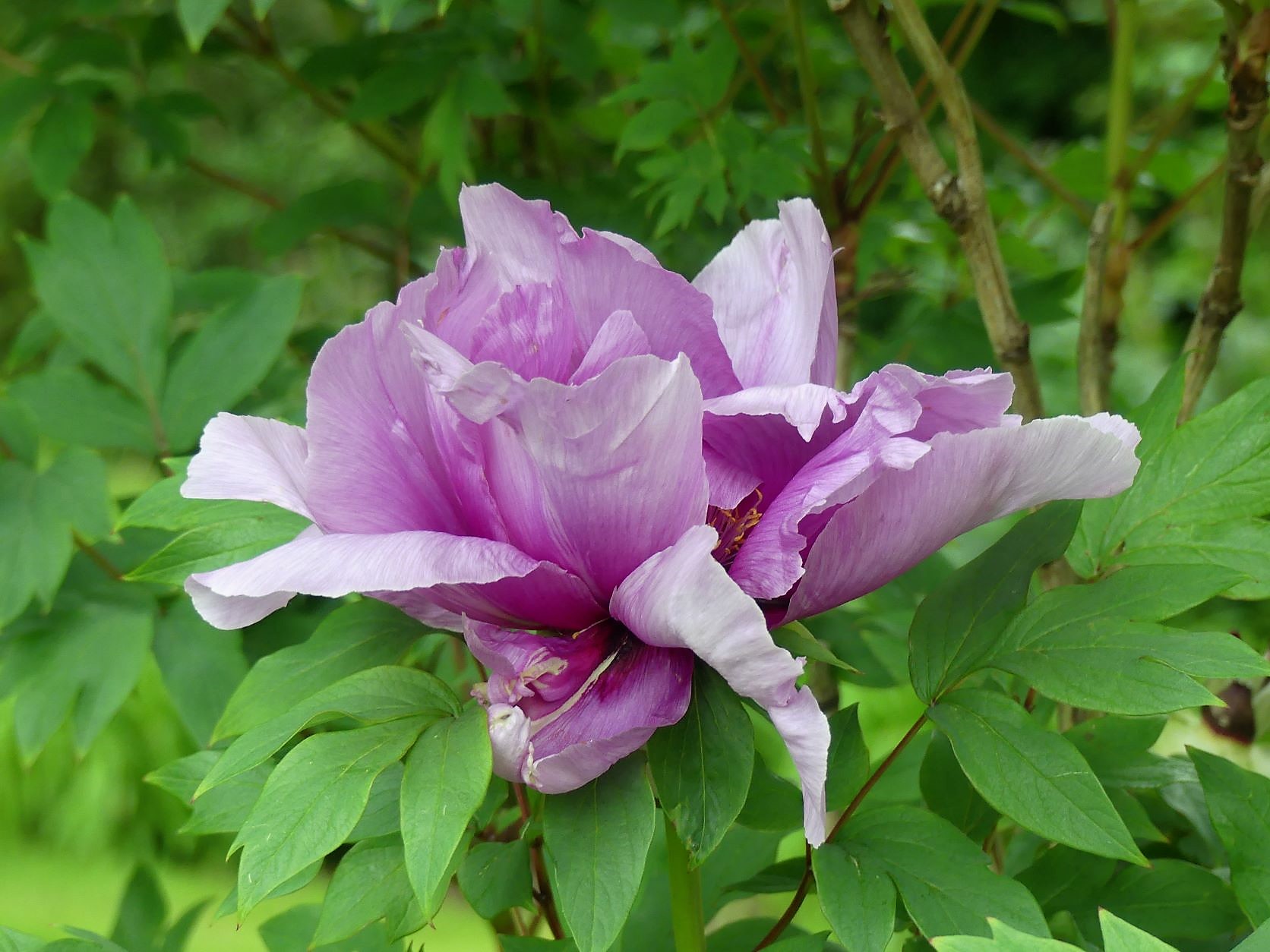
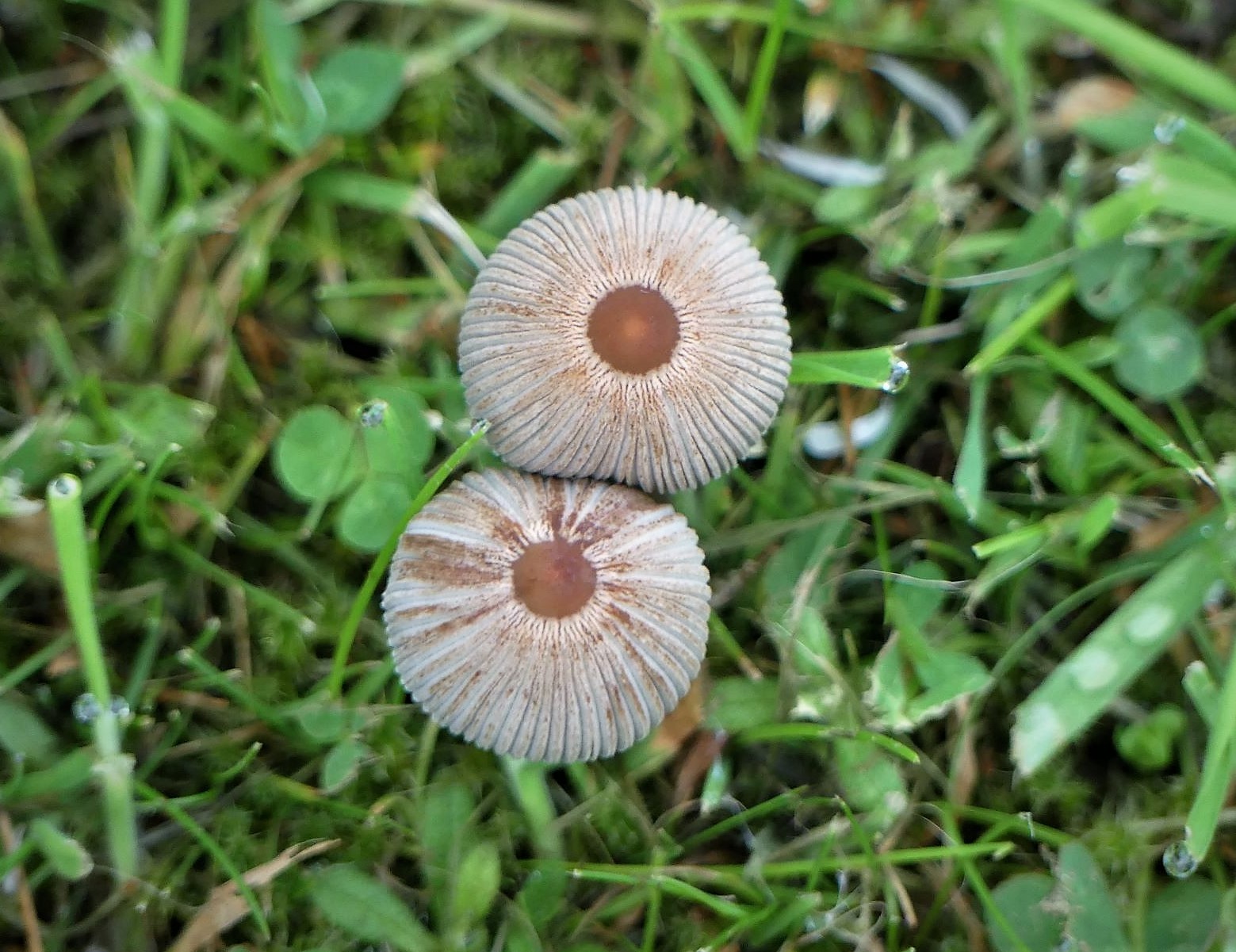
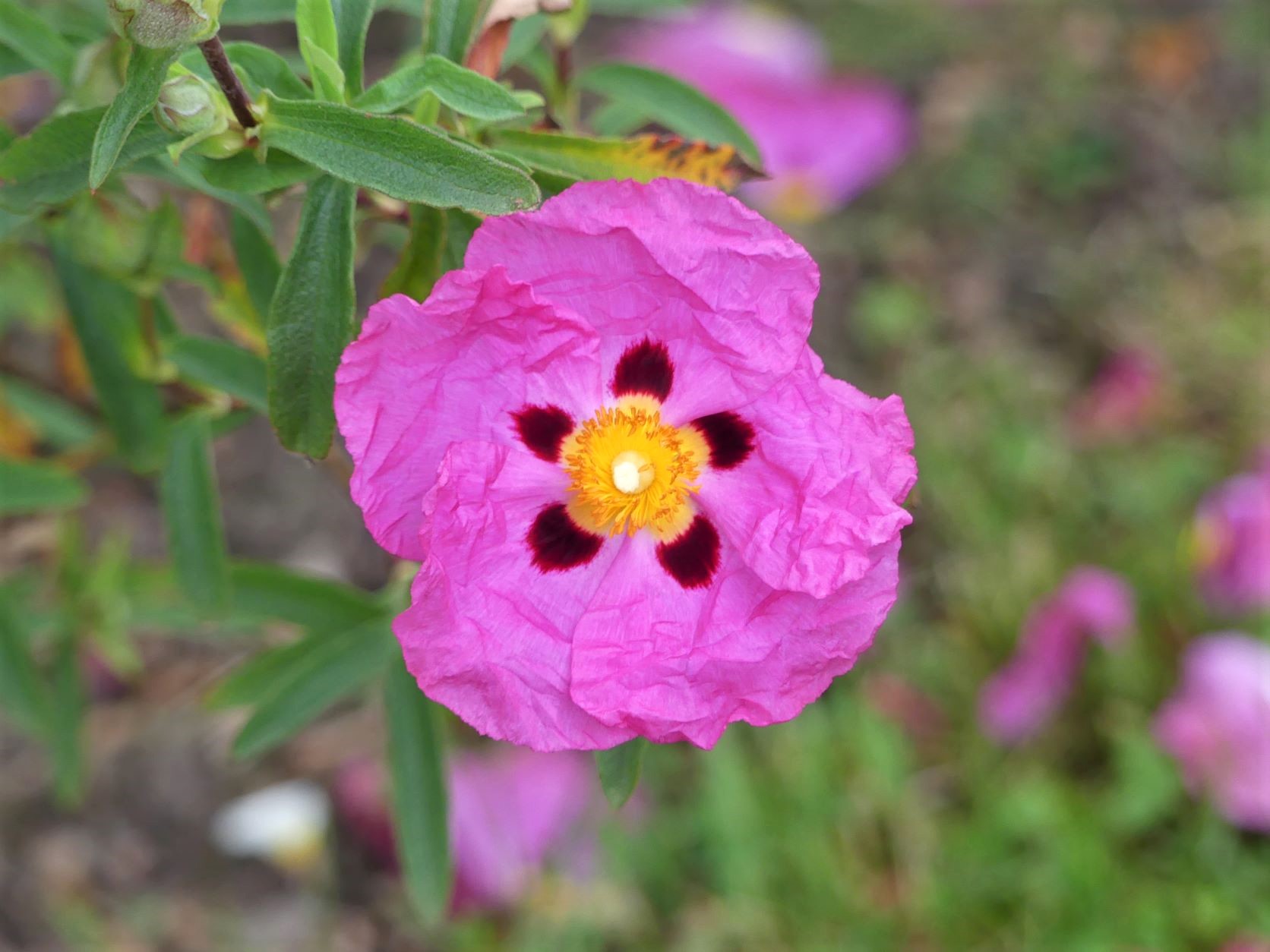
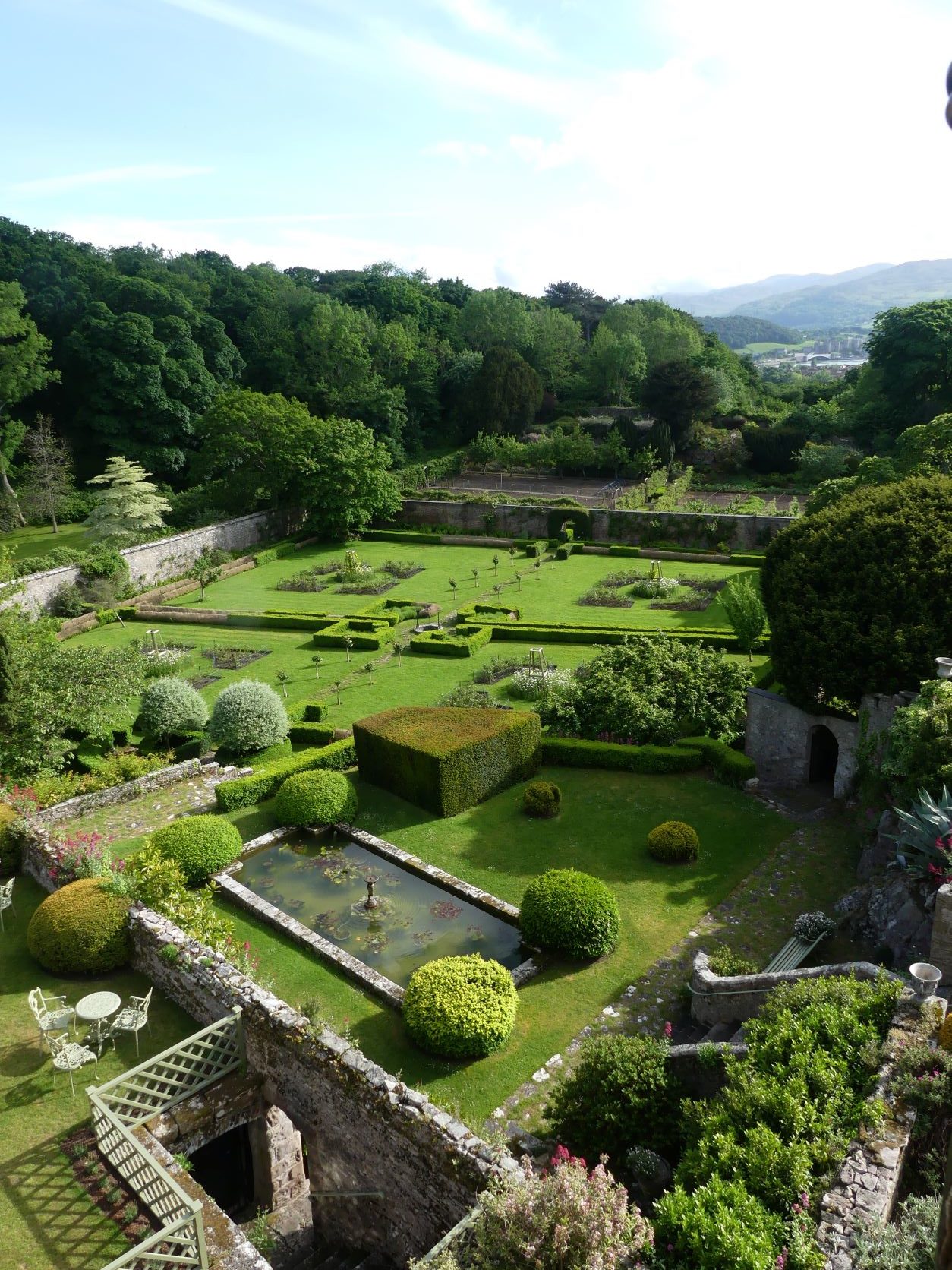
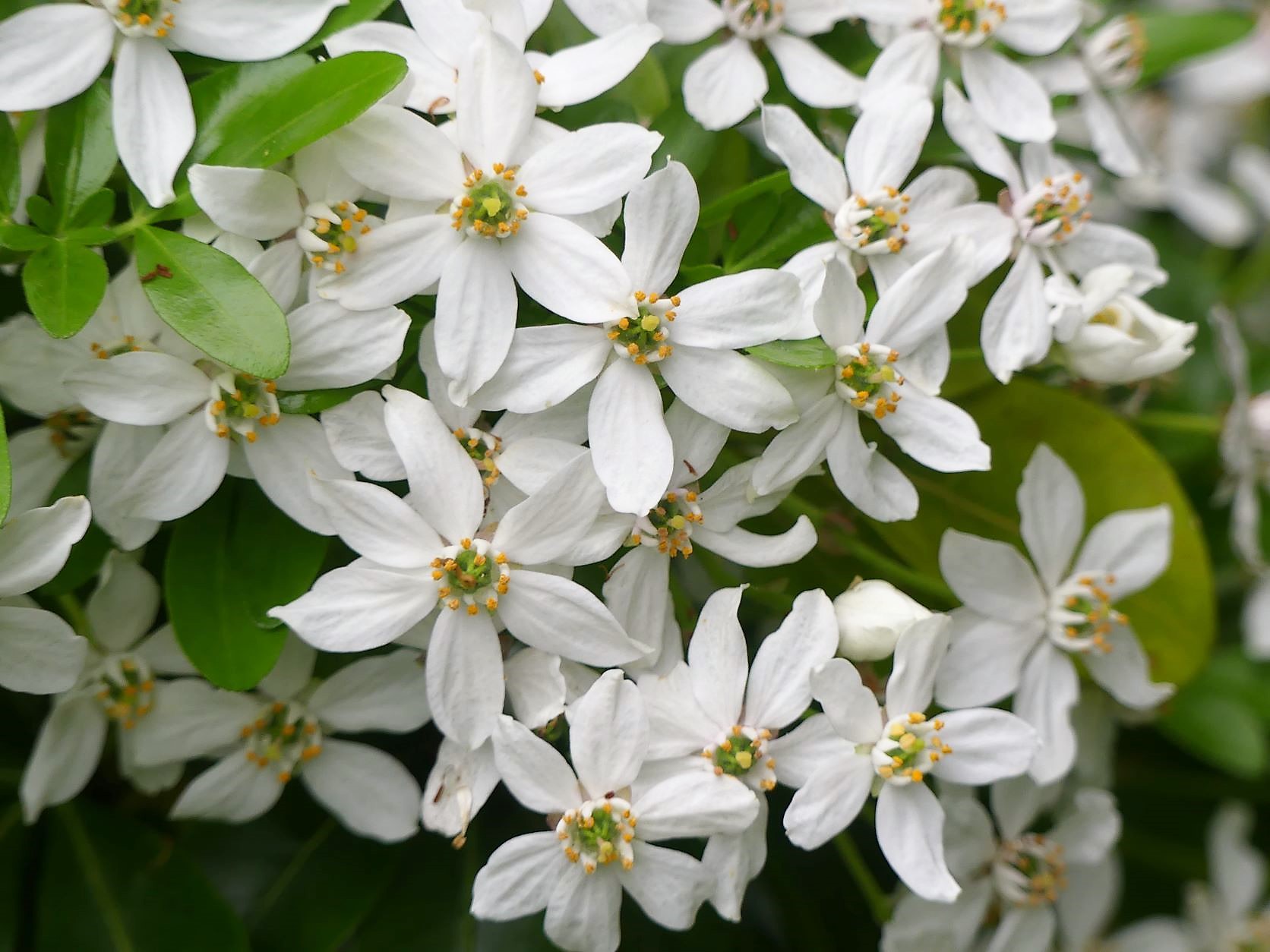
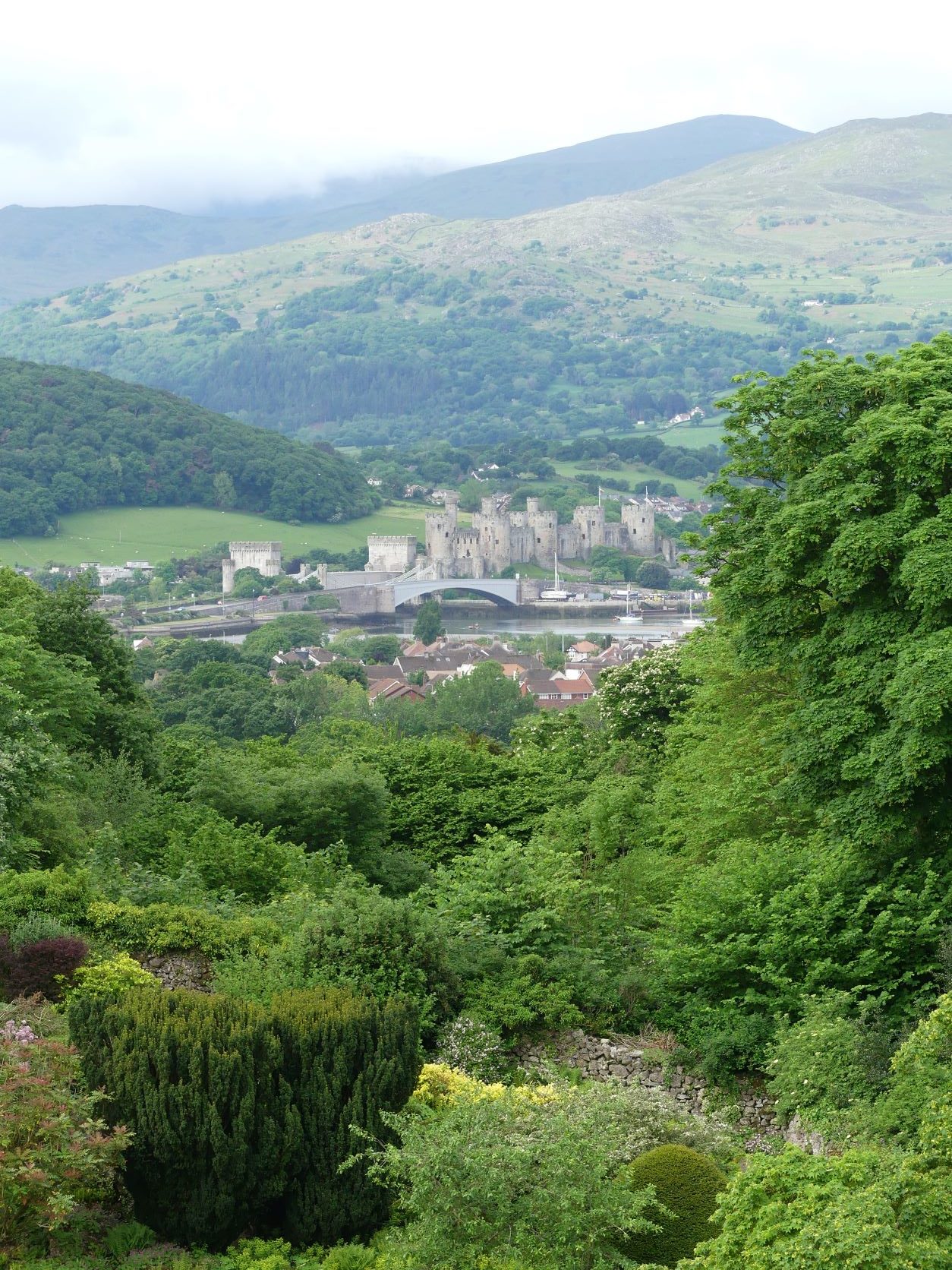

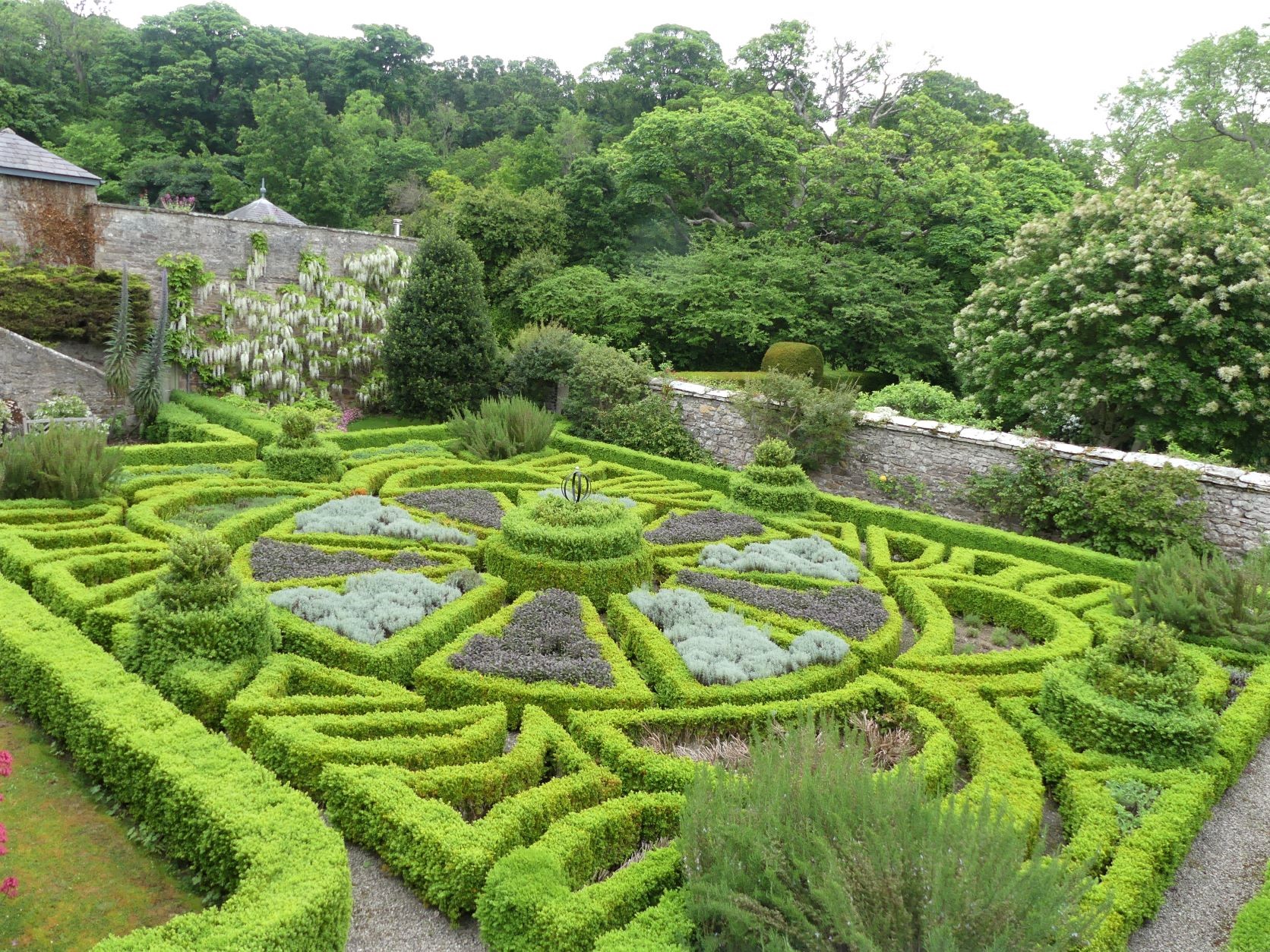
Dinner was at Bodysgallen’s highly rated, AA 3 Rosette awarded, restaurant … and another fantastic whole branzino for me (my 3rd order on this trip). It was steamed with rosemary and lemon and perfectly deboned; David’s saddle of lamb was tender (probably a “very locally sourced lamb” … like from just outside) and served in the lightest au jus … of course I reached over and soaked a piece of bread while David was distracted watching birds from our window table. All served with perfectly al dente vegetables from their garden.
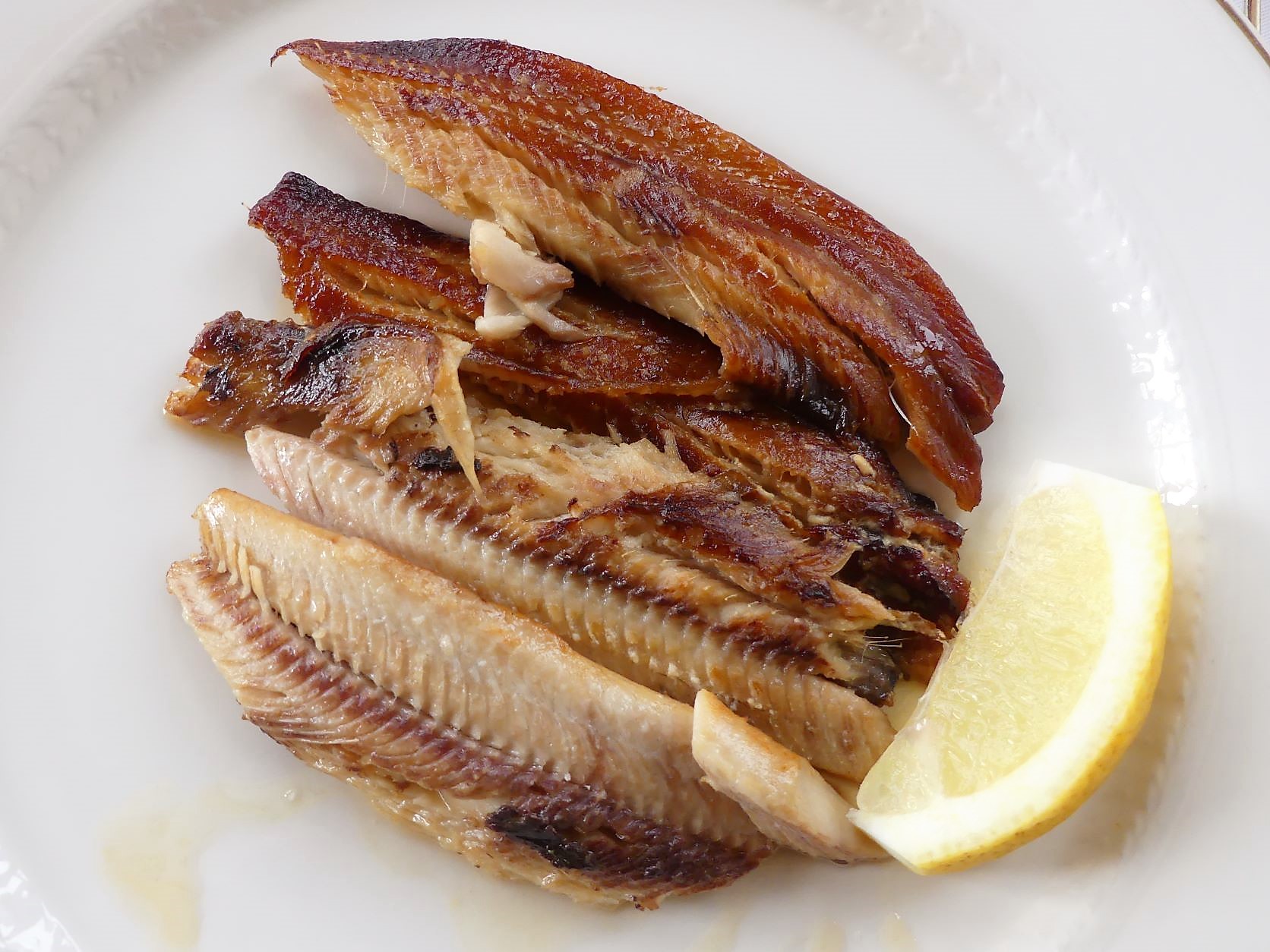
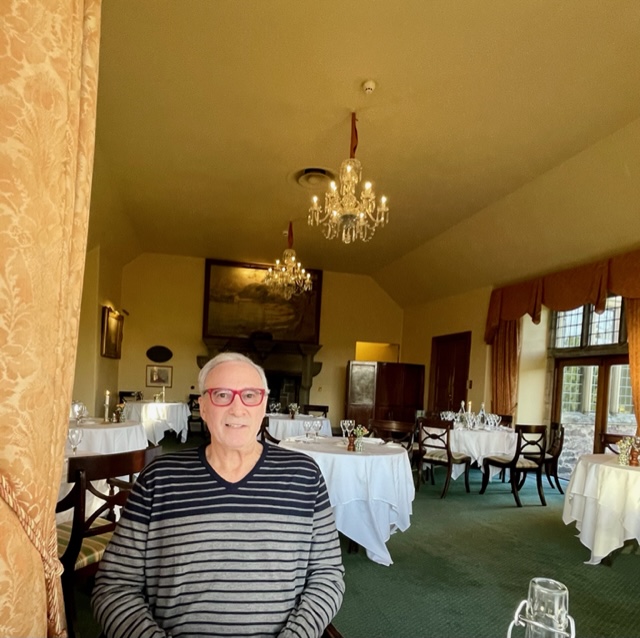
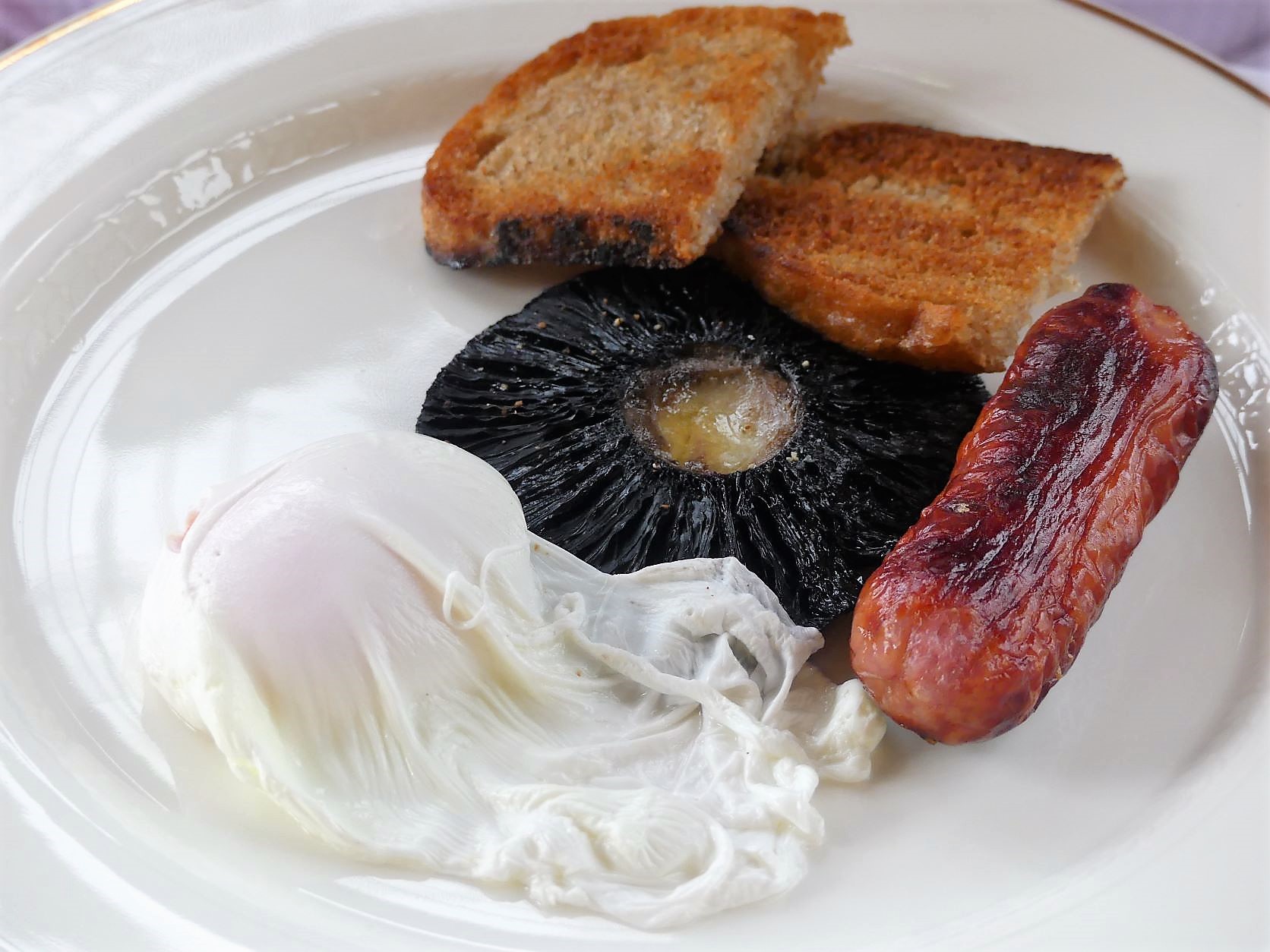

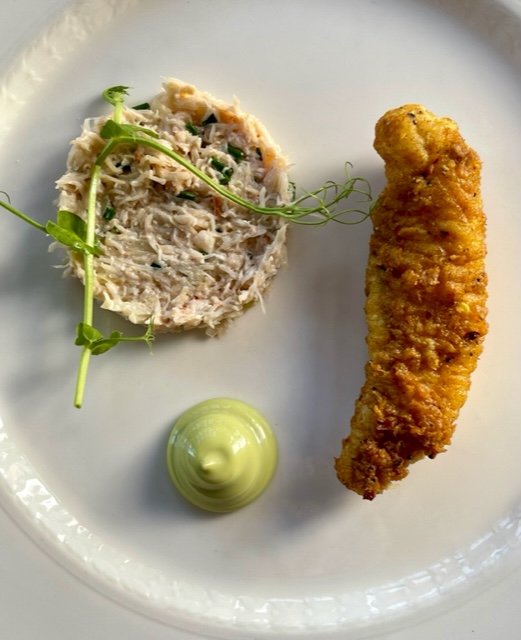

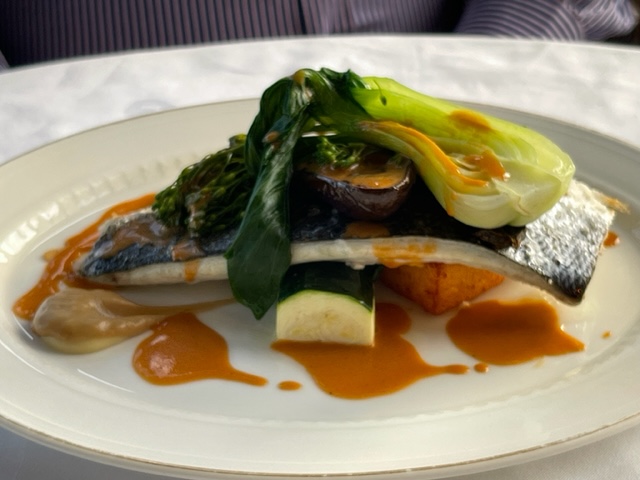
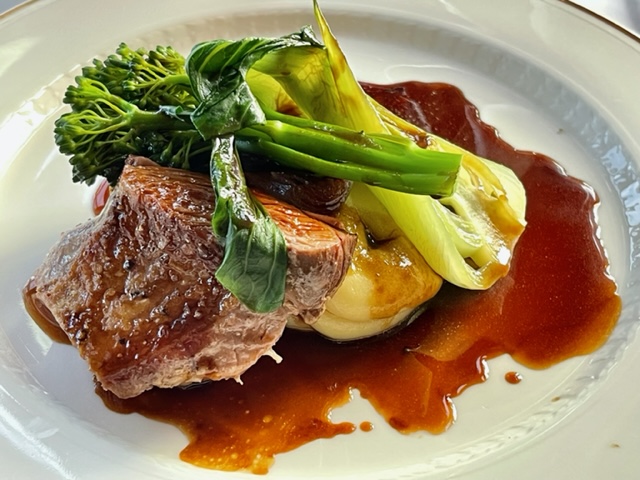
Llandudno
The following late afternoon, we set out to explore Llandudno, Wales largest resort town. Its Victorian and Edwardian architecture and pastel-colored hotels along the seafront transports you to another era. It has remained largely unchanged for over a century. Its scenic waterfront encapsulates a sheltered beach and Wales’s longest pier, completed in 1878.
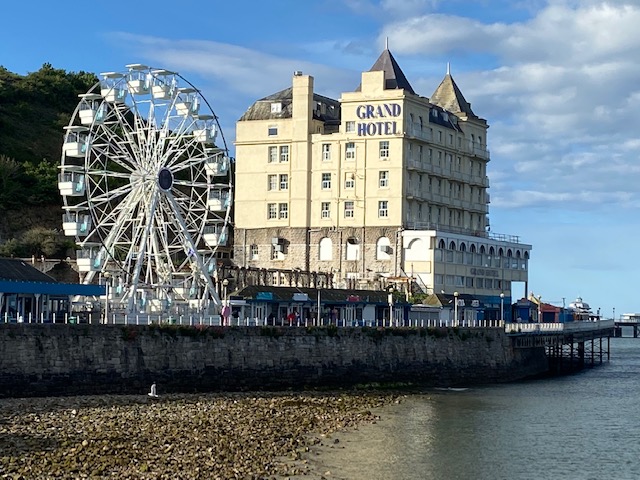
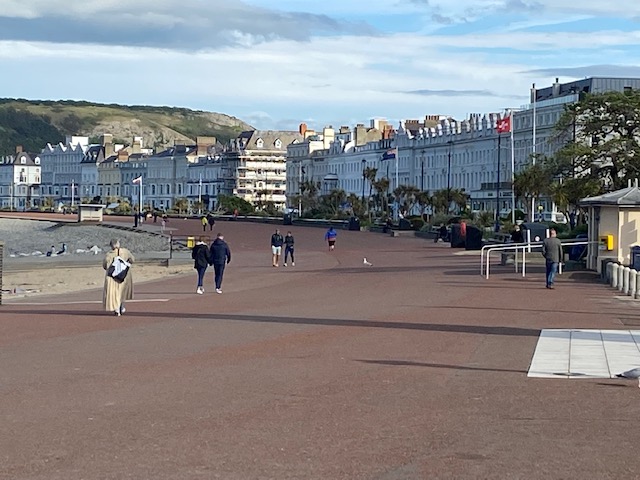
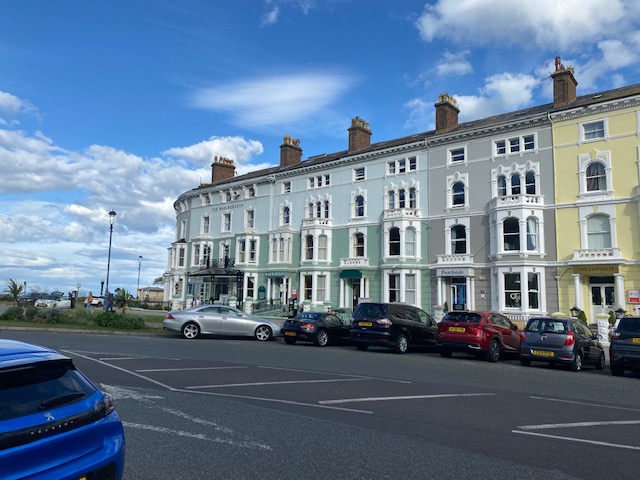
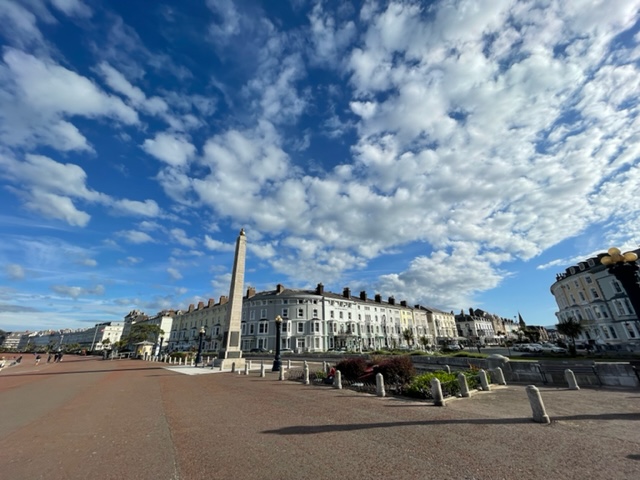
Dinner was at a highly rated seafood restaurant owned by a British telenovela actress and her chef husband (it shall remain nameless). Sadly, all our dishes were well-presented, but lacked seasoning and were lackluster in taste. How do you say it, B-L-A-N-D! This was our only true miss on dining our entire trip. It reminded me of British cooking way back on my first visit to England, 25+ years ago, before food preparation got more adventurous.
The platter of oysters were humongous creatures with only lemon served as an option. Where was my Mignonette Sauce, to bring out more of the sea brine? My sticky toffee pudding missed the mark, too, as it was drowning in caramel sauce and overly sweet. Sorry, but they’ll not be receiving any rating review from us.



Our Wales adventure is at an end. It’s a must repeat, as there’s so much more to experience throughout this small country with its distinctive language and a vibrant, local culture. Everywhere there’s so much nature, stunning views and warm-hearted people with its rich history to explore.
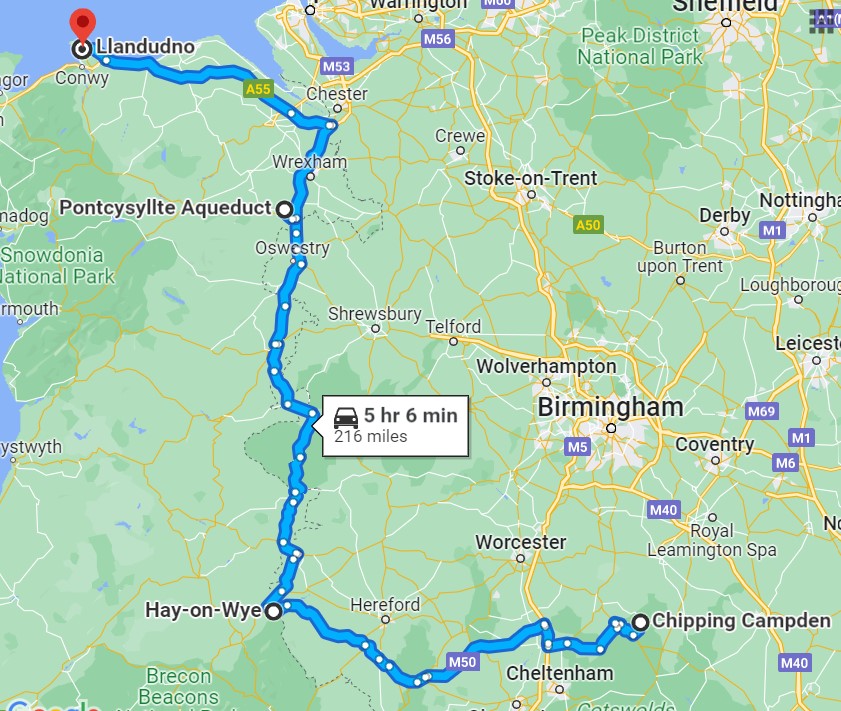
Up next … Beatrix Potter!
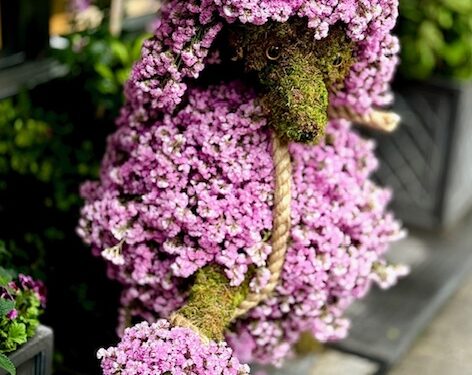


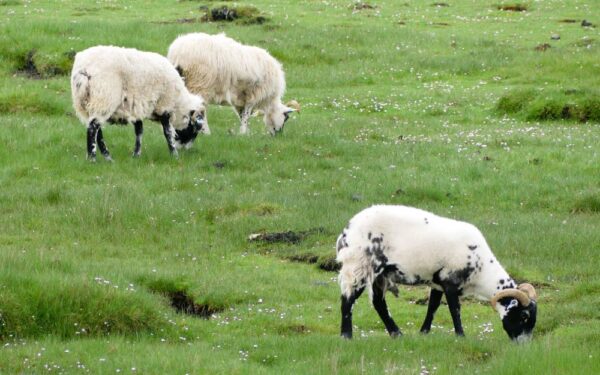
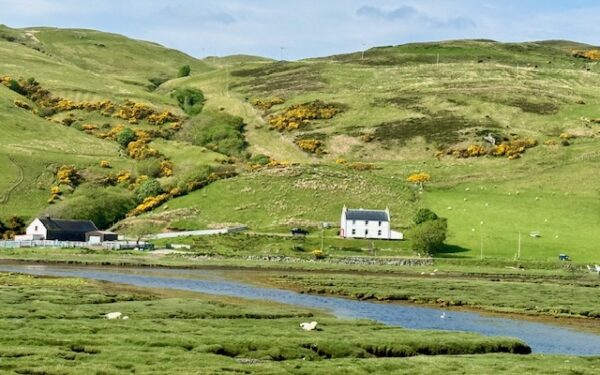
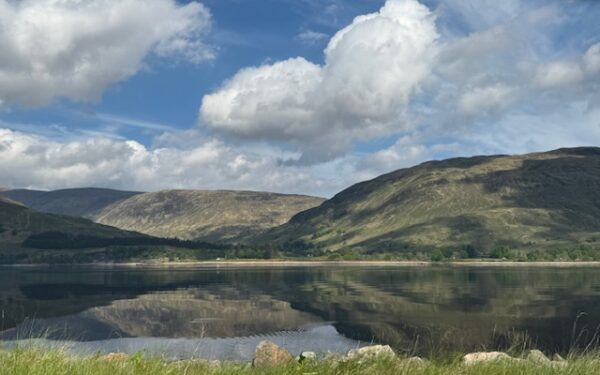
Just when I think you are back home, you are traveling somewhere else. What a great adventure this was. Of course your life is full of them. I am happy for you both.
Love ya…..
Great vistas (love the sheep). Wonderful commentary, guys. So glad you share your adventures with us!
Love the Jewish Ninja! It all looks like a fairy tale.
I love you guys and your travels so much!!